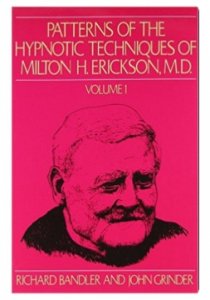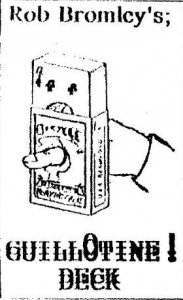Patterns of the Hypnotic Techniques of Milton H. Erickson, M.D. Volume 1
PDF download
This book (Volume I) is worth reading by anyone interested in hypnosis. The authors present the major linguistic techniques that Erickson used to induce and maintain hypnosis, as well as his methods of doing hypnotherapy. They approach Erickson from the discipline of linguistics, so the reading is a bit technical at times, but perfectly understandable if you stick with it. They review the same material many times to make it very clear to the reader. I wish there were an accompanying audiotape of Erickson so that the reader could hear the analogical markings that Erickson uses with his speech to clients. Anyone seriously interested in Erickson’s approach to hypnosis should read this book.
Volume II is nearly incomprehensive to someone who does not have a Ph.D. in linguistics. The authors in Volume II appear incapable of expressing their valuable ideas in simple English, which may be a sign that they really don’t understand what they are saying well enough to communicate it to others. Rather than spending your hard-earned money on Volume II, you might read other authors like Steve Gilligan (Therapeutic Trances) who covers the same material in plain English rather than quasi-mathematic formulas and mumbo-jumbo about 4-tuples, etc.
++++++++++++++++++++++++++++
This is a great book if you are interested in the more analytical and theoretical side of hypnosis and/or hypnosis used in therapy. — A linguistic perspective. –
Volume I covers the model overall
Volume II goes a little more into dealing with incongruent clients, and a linguistic model of representation. [the 4-tuple, R-Operator and C-Operator]
THE GOOD — [Although] It is not a very quick read… because everything in this book is actually useful. You will not want to rush through this one, and it is a book you will want to go back to. It does a good job covering the Milton Model, the language patterns and non-verbal communication.
This book is not for everybody though…
THE BAD — Personally, there isn’t anything I dislike about this book, but I do realize that some people have different interests and reasons for wanting to learn about hypnosis. First of all, this book is probably not for beginners. If you are, it would take a little longer to finish thoroughly. An book on Neuro-Linguistic Programming (NLP) that covers both the Meta-model and the Milton Model (consider “Introducing NLP”, by Joseph O’Connor et al. — it has a green cover) will provide a great introduction/pre-read to this book.
++++++++++++++++++++++++++++
Richard Bandler and John Grinder did not just read and study Milton’s method of hypnosis, they lived it day in and day out for years. They modeled it, along with Virginia Satir’s therapy models, Moshe Feldenkrais movement models and others. This book is their primary work on the structure of Milton’s trance inductions and his ability to create successful generative change in his patients. It is a must read for the serious student of hypnosis and a suggested read for everyone willing to work a bit to get to the good stuff.
++++++++++++++++++++++++++++++
This book is the inverse of The Structure of Magic. That book was about how to be relentlessly specific, which functions as a BS filter. For example, “my wife doesn’t love me anymore” requires mind-reading, so you could ask “how do you know she doesn’t love you anymore?”. That question doesn’t call the original statement into question, but asks for the evidence for the claim, based in sensory experience. Usually the answer is something like “she doesn’t look at me in some particular way that I never told her I liked”, which gives you something to work with.
As for THIS book, this is the opposite–essentially how to BS for constructive purposes. You can use it to catch on to a politician’s game, or–should your own thinking begin to sound a bit too much like what this book shows you how to do–to catch your OWN BS and knock it off. This book is about how a brilliant hypnotist talked, which is actually pretty simple in theory. He would mention things to shift your attention. Like this: did you notice just how much of your weight is going into your chair? You probably didn’t before, now you do. You do that with enough things and in a certain way, you have people in a different state of mind. If you’re good (and trying to help) you can talk them into not actively thinking/feeling bad about their problems, and have them in a state of mind where they can see things differently.
Then you can say things that don’t have any actual meaning to help them. Like this: there was an experience some time in your past, where you le
PLEASE NOTE: This item is a digital download ,Gimmick not included














